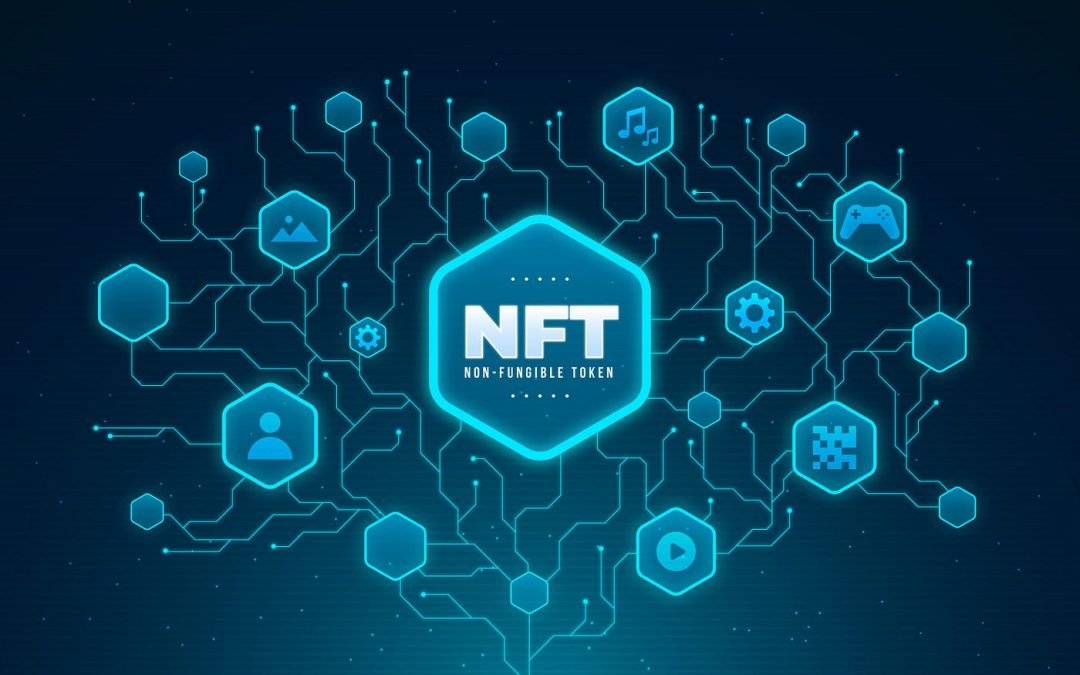Non-Fungible Tokens (NFTs) have taken the digital world by storm, transforming the concept of ownership and value in the virtual realm. NFTs represent unique digital assets that are indivisible and cannot be exchanged on a one-to-one basis like cryptocurrencies. Unique digital assets known as Non-Fungible Tokens (NFTs) rely on blockchain technology to prove ownership and validity. In contrast to fungible cryptocurrencies like Bitcoin or Ethereum, which may be swapped one-to-one, NFTs are indivisible and stand in for unique digital goods.
NFTs have drawn a lot of attention in recent years from investors, collectors, and artists all around the world. The rise in popularity can be linked to NFTs’ capacity to address the age-old problem of digital scarcity and establish a market for one-of-a-kind digital goods.
The idea of digital ownership is being revolutionized by NFTs, which are also changing many other businesses.
A new age of digital ownership, where creators and collectors may purchase, sell, and exchange distinctive digital goods securely and openly, is being ushered in by the advent of NFTs. NFTs also can fundamentally alter a variety of businesses, including those in the arts, music, entertainment, sports, and more, by bringing in new revenue sources and giving creators unparalleled leverage.
Each NFT is distinct, and their ownership and transaction history are recorded on the blockchain, ensuring their authenticity and scarcity. The emergence of NFTs has unlocked a new era for digital collectibles, art, and other virtual assets, raising questions and excitement about the future of this revolutionary technology.
Table of Contents
Unique Ownership and Scarcity
NFTs have introduced a novel way of claiming ownership over digital assets that were once easily replicable and shared. Digital art, music, virtual real estate, and even tweets can now be tokenized as NFTs, granting individuals verifiable proof of ownership and authenticity. This sense of uniqueness and scarcity, combined with the ability to prove provenance on the blockchain, has driven the value of certain NFTs to unprecedented heights. Collectors and enthusiasts are drawn to the exclusivity of owning a one-of-a-kind digital item, just like owning a rare physical collectible.
Empowering Creators
NFTs have revolutionized the way artists, musicians, and content creators monetize their work in the digital realm. Historically, digital content was easily reproduced and shared without proper compensation to the original creators. However, NFTs enable creators to tokenize their digital creations, sell them directly to buyers, and receive a percentage of the proceeds from future sales. This not only empowers artists to retain more control over their work but also opens up new revenue streams, fostering a more sustainable and fair ecosystem for digital content creators.
Virtual Economies and Gaming
NFTs are becoming increasingly integrated into virtual economies, particularly in the gaming industry. Many video games now offer NFT-based items, characters, and assets that players can buy, sell, and trade. These virtual goods hold real-world value and can be exchanged on secondary markets, enabling gamers to turn their in-game achievements and collectibles into tangible assets. The combination of NFTs with blockchain technology offers players true ownership and the ability to transfer their digital assets across different games and platforms.
Challenges and Concerns
As NFTs continue to gain popularity, certain challenges and concerns have emerged. One of the primary concerns is environmental impact, as the blockchain technology used to create and manage NFTs consumes significant amounts of energy. However, efforts are being made to explore more energy-efficient alternatives and reduce the carbon footprint of NFT transactions. Another challenge is the potential for copyright infringement and intellectual property disputes. While NFTs provide a verifiable record of ownership, they do not automatically grant copyright ownership. Therefore, ensuring that creators’ rights are protected in this digital landscape remains an ongoing challenge. Additionally, the NFT market has experienced volatility, with prices of certain assets soaring and then plunging. This volatility raises questions about the sustainability and long-term viability of some NFT investments.
The Future of NFTs
Despite challenges, the future of NFTs looks promising. As technology continues to mature, we can expect more innovative use cases beyond art and gaming. NFTs could revolutionize the way we trade real estate, intellectual property, and other high-value assets, making transactions more efficient, transparent, and secure.
Interoperability between different blockchain networks could also play a significant role in the future of NFTs. Currently, most NFTs are created on specific blockchain platforms, limiting their cross-platform exchange. However, efforts are underway to enable the seamless transferability of NFTs across various blockchain ecosystems, unlocking new possibilities for digital collectibles and asset ownership.
In conclusion, the rise of NFTs marks a transformative moment in the digital landscape, redefining how we perceive ownership and value in the virtual world. By empowering creators, offering unique ownership experiences, and driving innovation in various industries, NFTs have the potential to reshape the future of digital collectibles and asset ownership for years to come. However, addressing environmental concerns, ensuring copyright protection, and fostering a sustainable market will be critical to realizing the full potential of this groundbreaking technology.



